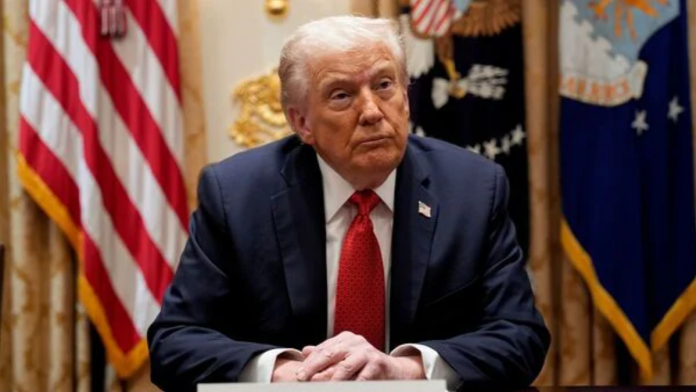U.S. President Donald Trump has proposed giving most Americans a $2,000 “dividend” funded by the tariff revenues collected by his administration. He shared the idea on his Truth Social account, saying that every person, except high-income earners, would receive the payment. Trump called tariffs a tool for national strength and criticized opponents of the policy, calling them “fools”.
The proposal is seen as a move to increase public support for his trade and tariff strategy. However, any such payment program would need approval from Congress before becoming law. Earlier this year, a senator introduced a smaller plan that suggested $600 rebates for most Americans and their dependents, arguing that citizens should directly benefit from the tariff collections.
Trump’s new proposal goes further, promising at least $2,000 per person. Supporters see it as a reward for workers, while critics question whether it is financially possible.
Treasury’s Focus and Funding Concerns
According to Treasury data, about $195 billion in customs duties were collected during the first three quarters of the year. However, analysts say this is far less than what would be needed to cover the cost of Trump’s proposal. Economists estimate that providing $2,000 to most Americans would cost between $300 billion and $500 billion, depending on who qualifies.
Hungary escapes U.S. sanctions — Trump approves Russian energy exemption for one year
One estimate placed the total cost as high as $513 billion, which is more than double the total tariff revenue collected so far. The Treasury Secretary recently said that the government’s top priority remains reducing the national debt, which currently stands at $38.12 trillion, rather than issuing rebate checks. He explained that tariff revenues are intended “to start paying down the federal debt”, not to fund direct payments.
Still, he left open the possibility that the so-called $2,000 dividend could come in other forms. Instead of direct checks, it might appear as tax cuts or deductions, such as:
- No tax on tips or overtime pay.
- No tax on Social Security benefits.
- Possible deductions for auto loan payments.
These measures, he said, could form part of a larger tax plan under the administration.
Economists Question the Numbers
Experts have raised doubts about whether the math behind the proposal adds up. One analysis suggested that if the income cutoff is $100,000, around 150 million adults would qualify, bringing the total cost close to $300 billion. If children are included, that amount would grow.
After accounting for the wider budget effects of tariffs, analysts said that net revenues from tariffs are closer to $90 billion, far below what would be needed for such large-scale rebates.
SCOTUS delivers tense rebuke over Trump’s emergency tariff powers
At the same time, consumers are feeling the effects of higher tariffs. Data from the Yale Budget Lab showed that as of October, the average effective tariff rate had risen to nearly 18 percent, the highest level since 1934. Many companies have passed those extra costs on to shoppers, which analysts say has added pressure to household budgets. Critics argue that tariffs have worked as a hidden tax on families while offering only limited protection to domestic industries.
Legal and Political Challenges Ahead
This is not the first time Trump has suggested using tariffs to fund direct payments. In previous months, he floated similar ideas, ranging from $1,000 to $2,000 rebates, and even discussed a $5,000 “dividend” linked to government savings efforts. None of those earlier proposals were implemented as federal deficits grew and expected savings failed to appear.
Meanwhile, the U.S. Supreme Court recently heard arguments about the legality of Trump’s global tariff regime, with some justices questioning its scope and constitutionality. The outcome of that case could have implications for how future tariff-related programs are managed.
For now, the $2,000 “tariff dividend” remains a proposal without congressional approval, funding support, or a set timeline for implementation. While it has generated attention and debate, it is still uncertain how — or if — Americans will ever receive such payments.


